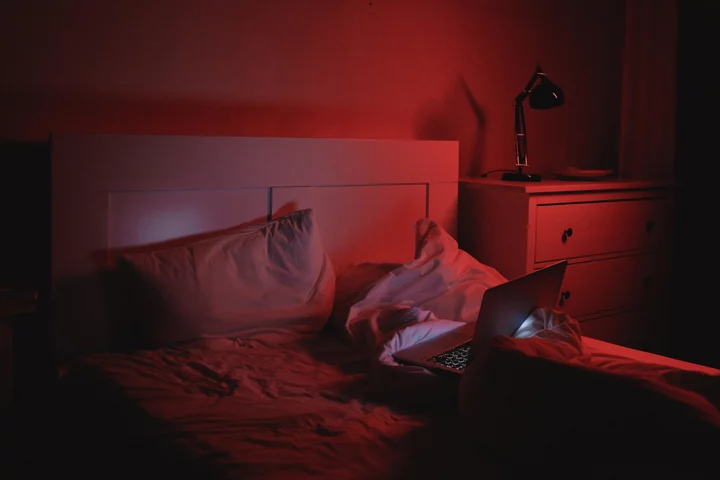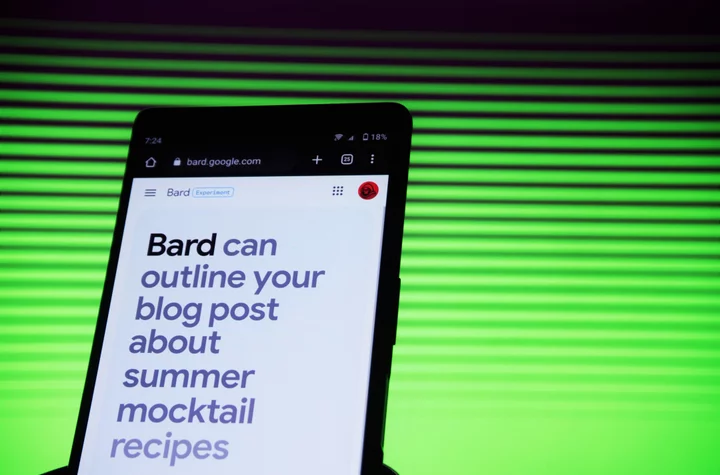
Ingersoll Rand Names Matt Emmerich as CIO
DAVIDSON, N.C.--(BUSINESS WIRE)--Jul 10, 2023--
2023-07-11 04:30

Stock market today: Asian shares extend losses after China reports lower growth than expected
Shares are mostly lower in Asia as optimism over a Wall Street rally was countered by worries about the Chinese economy
2023-07-18 12:16

Adtran unveils industry’s first 64G Fibre Channel solution for quantum-safe DCI networking
HUNTSVILLE, Ala.--(BUSINESS WIRE)--Jun 29, 2023--
2023-06-29 20:29

Cascade Biocatalysts Secures $2.6 M to Scale Enzymes for Biomanufacturing
DENVER--(BUSINESS WIRE)--Aug 22, 2023--
2023-08-22 21:58

EU opens investigation into X’s handling of disinformation over Hamas attack on Israel
The EU has launched an investigation into Elon Musk’s X – formerly known as Twitter — over its alleged spreading of disinformation, “in particular the spreading of terrorist and violent content and hate speech” over the recent Hamas attack on Israel. It will be the first inquiry conducted in relation to the European Union’s recently implemented tech regulations and will also scrutinise the procedures at X for managing complaints. Earlier, X announced that it removed numerous accounts associated with Hamas from its platform. In a statement on Thursday, the EU said that “the European Commission services sent to X a formal request for information under the Digital Services Act (DSA)”. “This request follows indications received by the Commission services of the alleged spreading of illegal content and disinformation, in particular the spreading of terrorist and violent content and hate speech. The request addresses compliance with other provisions of the DSA as well.” The EU’s industry chief Thierry Breton clashed online with Mr Musk after telling him in a letter that “violent and terrorist content” had not been taken down from X despite warnings. Mr Breton refrained from giving more specific details about the disinformation mentioned in the letter. However, he noted that instances of “fake and manipulated images and facts” were widely documented on the social media platform. Mr Musk hit back on X saying: “Our policy is that everything is open and transparent, an approach that I know the EU supports. Please list the violations you allude to on X, so that the public can see them.” TikTok and Meta have also received warnings from the European Union for their alleged failures in addressing disinformation on their social media platforms. The EU is requesting that X provide information related to its investigation by 18 October. Mr Breton had initially written that Mr Musk should respond within 24 hours. Mr Breton also reminded Mr Musk that the DSA “sets very precise obligations regarding content moderation,” and that X needs “to be very transparent and clear on what content is permitted under your terms and consistently and diligently enforce your own policies”. He added that he expects X “to be in contact with the relevant law enforcement authorities and Europol, and ensure that you respond promptly to their requests”. “I remind you that following the opening of a potential investigation and a finding of non-compliance, penalties can be imposed,” Mr Breton wrote. Linda Yaccarino, CEO of X, announced on Thursday that the platform had taken action to remove hundreds of Hamas-affiliated accounts and had also initiated steps to either remove or label tens of thousands of pieces of content since the attack that occurred on Saturday. Read More Israel-Hamas war live: UN alarmed by north Gaza evacuation order as IDF ‘fires white phosphorus on Strip’ Hamas’s hostages: What to know about Israelis abducted by the militant group France has banned pro-Palestinian protests and vowed to protect Jews from resurgent antisemitism EU asks Elon Musk to ‘walk the talk’ on X/Twitter disinformation over Hamas attack Viral WhatsApp warning of cyberattack targeting Jewish people is fake Microsoft revised deal to buy Call of Duty maker Activision cleared by watchdog
2023-10-13 15:56

Qualcomm Tumbles After China Woes Hits Apple, Huawei Vendors
Qualcomm Inc., the world’s biggest supplier of smartphone chips, suffered its worst stock decline in a month after
2023-09-08 05:16

UK’s Apple Users Get a £100 Price Cut on New iPhone 15 Pro Model
Apple Inc.’s new iPhone 15 Pro will go on sale in the UK for about £100 ($125) cheaper
2023-09-13 16:21

Nobel Prize in Physics 2023 awarded to scientists who made ‘impossible’ breakthrough
The Nobel Prize in Physics has been awarded to three scientists for discovering a way to study the world at a level previously thought impossible. The Nobel Assembly announced that Pierre Agostini, Ferenc Krausz and Anne L’Huillier would receive the 2023 prize “for experimental methods that generate attosecond pulses of light for the study of electron dynamics in matter”. “The laureates’ contributions have enabled the investigation of processes that are so rapid they were previously impossible to follow,” the committee announced during a ceremony in Stockholm on Tuesday. Applications for the research include molecular fingerprinting applied to biological samples like blood plasma. By observing minute changes with this technique, it is hoped that in the future it will be possible to detect cancers at a very early stage. The award comes a day after the Nobel Assembly awarded Katalin Karikó and Drew Weissman the Nobel Prize in Physiology or Medicine “for their discoveries concerning nucleoside base modifications that enabled the development of effective mRNA vaccines against Covid-19.” The awards for chemistry, literature, peace and economics are set to be announced between Wednesday, 4 October, and Monday, 9 October. More to follow Read More Solar airship targets first non-stop round-the-world flight without fossil fuels Zuckerberg says Metaverse can bring back the dead – virtually Apple blames Instagram for overheating iPhones
2023-10-03 18:19

Apex Legends Pick Rates October 2023: Most Popular Characters
The Apex Legends pick rates in October 2023 crown Octane, Pathfinder, and Bangalore as the most popular characters while Crypto and Seer rank last.
2023-10-13 04:59

Adin Ross wows fans as he offers $10K cash to MarkyNextDoor and Sweatergxd, Internet says 'f**king goat'
Adin Ross made headlines with his recent IRL stream where he surprised fellow Kick streamers, MarkyNextDoor and Sweatergxd with a generous cash gift
2023-07-30 17:47

California Approves Boosting Natural Gas Storage at Site of Worst Leak
California regulators approved a proposal to inject more natural gas at Sempra Energy’s Aliso Canyon Natural Gas Storage
2023-09-01 08:22

SoftBank's Arm discusses pricing IPO at $52 per share-source
NEW YORK SoftBank Group Corp's chip designer Arm Holdings Plc was discussing pricing its U.S. initial public offering
2023-09-14 04:28
You Might Like...

Geothermal breakthrough uses oil drilling tech to tap renewable energy

Texas Bakes and Breaks Records Amid Searing Heat: Weather Watch

Adobe open to remedy discussions with EU on Figma deal, says chief counsel

How much does Kylie Jenner charge per post on Instagram? Reality TV star pushed to second place by Cristiano Ronaldo who earns $2.40M per post

PayPal to halt UK crypto sales until 2024

How to unblock LiveJasmin for free

Karpowership Wins Environment Permit for South African Power Plant

How to unblock Google Bard for free from anywhere in the world
